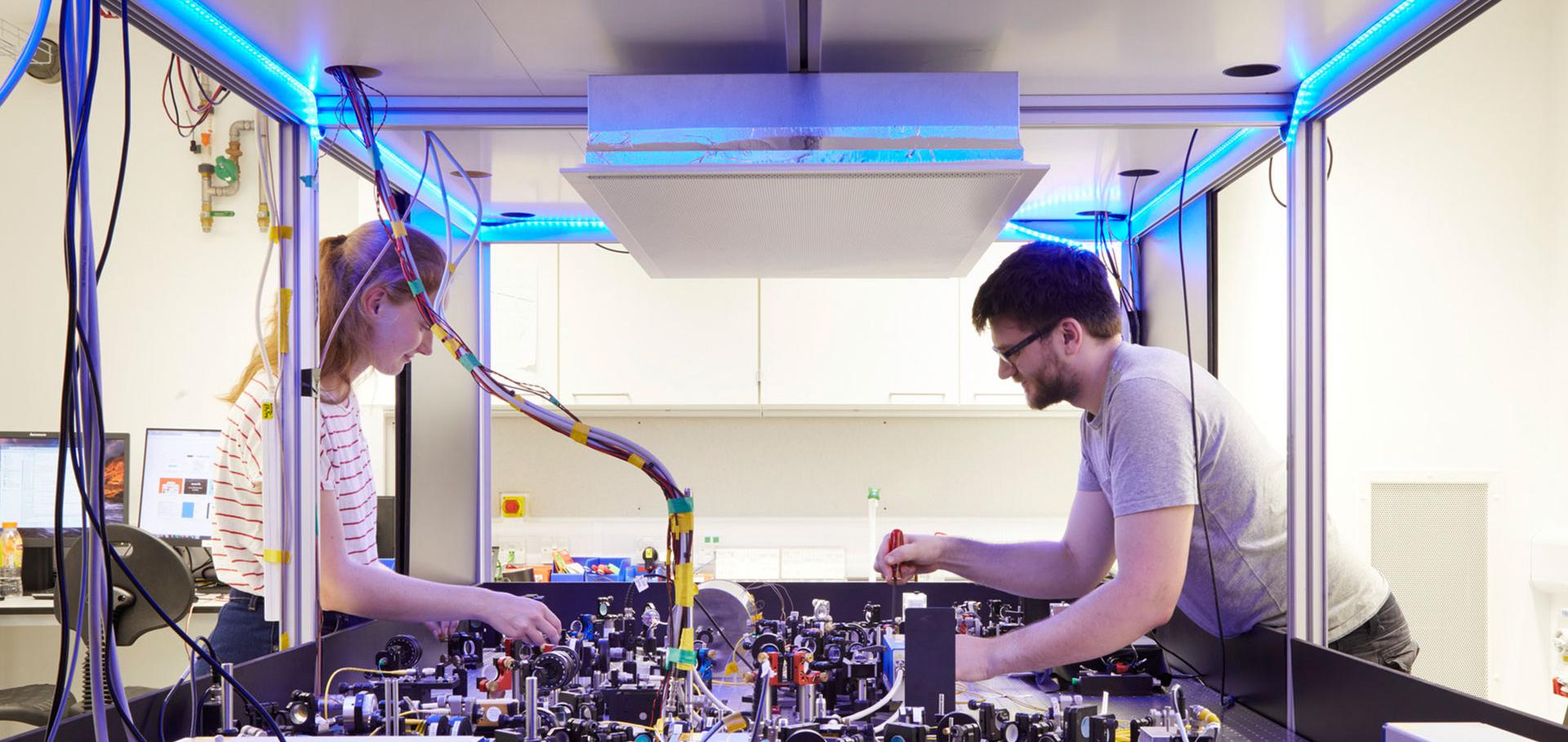Ultralarge Rydberg dimers in optical lattices
Physical Review A - Atomic, Molecular, and Optical Physics 78:4 (2008)
Abstract:
We investigate the dynamics of Rydberg electrons excited from the ground state of ultracold atoms trapped in an optical lattice. We first consider a lattice comprising an array of double-well potentials, where each double well is occupied by two ultracold atoms. We demonstrate the existence of molecular states with equilibrium distances of the order of experimentally attainable interwell spacings and binding energies of the order of 103 GHz. We also consider the situation whereby ground-state atoms trapped in an optical lattice are collectively excited to Rydberg levels, such that the charge-density distributions of neighboring atoms overlap. We compute the hopping rate and interaction matrix elements between highly excited electrons separated by distances comparable to typical lattice spacings. Such systems have tunable interaction parameters and a temperature ∼ 104 times smaller than the Fermi temperature, making them potentially attractive for the study and simulation of strongly correlated electronic systems. © 2008 The American Physical Society.Measuring phonon dephasing with ultrafast pulses using Raman spectral interference
Physical Review B - Condensed Matter and Materials Physics 78:15 (2008)
Abstract:
A technique to measure the decoherence time of optical phonons in a solid is presented. Phonons are excited with a pair of time-delayed 80 fs near infrared pulses via spontaneous transient Raman scattering. The spectral fringe visibility of the resulting Raman pulse pair, as a function of time delay, is used to measure the phonon dephasing time. The method avoids the need to use either narrow band or few femtosecond pulses and is useful for low phonon excitations. The dephasing time of phonons created in bulk diamond is measured to be τ=6.8 ps (Δν=1.56 cm-1). ©2008 The American Physical Society.Multimode memories with longitudinally broadened ensembles
Conference on Quantum Electronics and Laser Science (QELS) - Technical Digest Series (2008)
Abstract:
Quantum storage of multiple optical modes affords improved performance for quantum repeaters. We present new analytic and numerical results unifying the scaling of the multimode storage capacity for various memory protocols in artificially broadened ensembles. © 2008 Optical Society of America.Efficient spatially resolved multimode quantum memory
Physical Review A - Atomic, Molecular, and Optical Physics 78:3 (2008)
Abstract:
Light storage in atomic ensembles has been implemented successfully, but the retrieval efficiency can be low. We propose to improve this efficiency with appropriately phase-matched backward propagating retrieval. This method allows for easy spatial filtering of the retrieved light; in addition, multiple optical modes can be stored in the transverse momentum of the ensemble. We model walk-off effects with a full numerical simulation, and confirm the applicability of the scheme. © 2008 The American Physical Society.Optical lattice quantum Hall effect
Physical Review A - Atomic, Molecular, and Optical Physics 78:1 (2008)


